A few months ago, I finally convinced myself to purchase a large Harvest Right freeze dryer. At about $4,000, that’s a big investment for me!

But I had to wait to use it because I needed an electrician to come out and check things out. Basically, the large freeze dryer needs a dedicated 20-amp circuit, a special outlet made for 20-amp plugs, and I generally wanted to make sure I wasn’t going to burn the house down.
Once all that was straight, I got started freeze drying. After freeze drying a loaf of moist bread (that’s what the manufacturer suggests using to break in the unit), I naturally chose to freeze dry eggs from chickens.
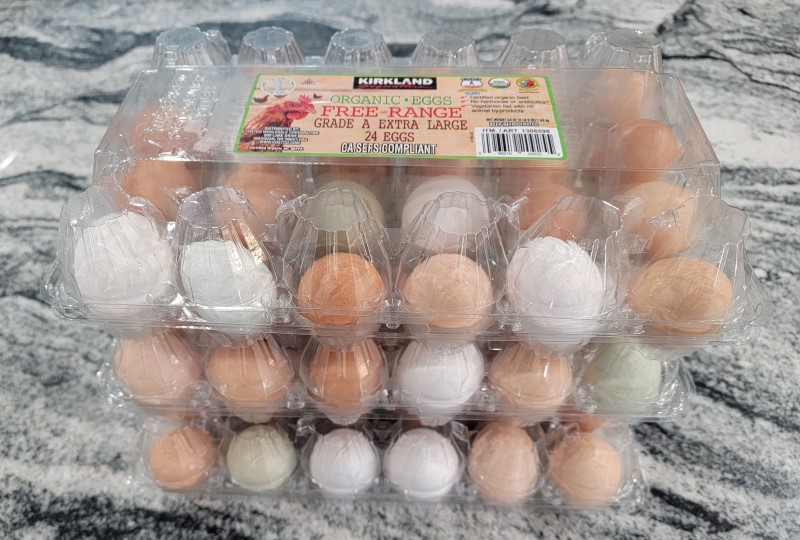
Although I could’ve freeze dried more eggs, I choose six dozen as a good amount to start with because I didn’t want to make a giant mess inside my freeze dryer as I’ve seen other folks do online.
After whisking, I got about twelve cups of eggs.
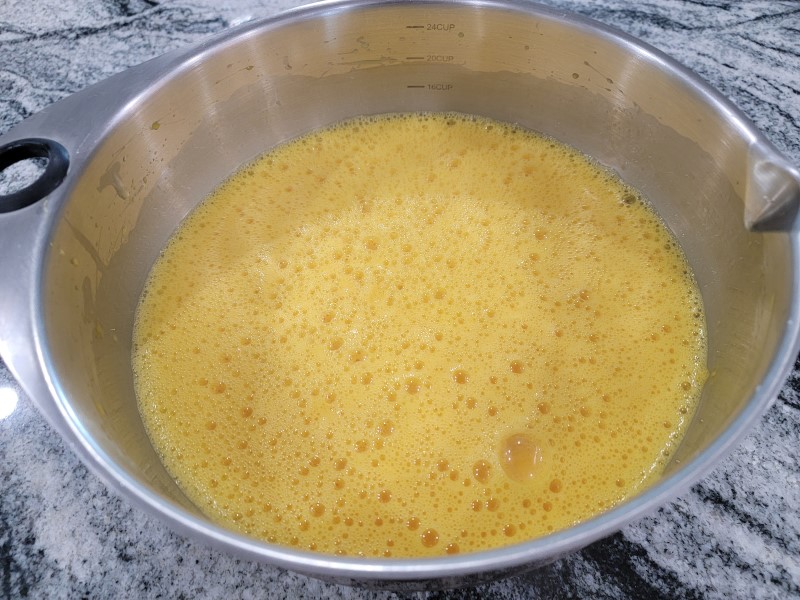
Even using an electric beater, I had a hard time getting all of the yolks broken up. In fact, as I was pouring them into the trays I still had one yolk I missed. But I brought a fork with me just in case that happened.
I also chose to use a measuring cup in an effort to distribute the egg mix evenly among trays. That worked out well.
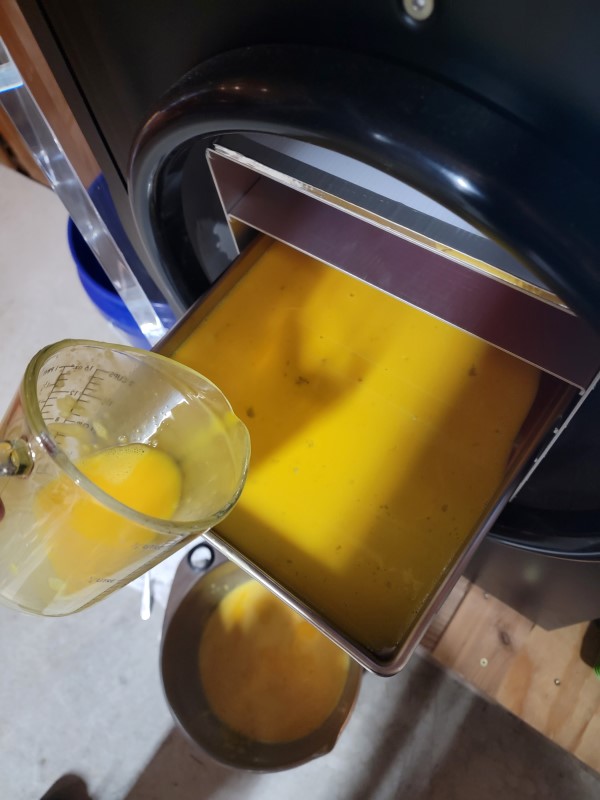
One thing I noticed right from the start is that my freeze dryer wasn’t level side to side. It wasn’t way off, but I did choose to level it left to right so future egg mixtures level off properly. That said, it’s my understanding that the freeze dryer should lean back a bit due to defrosting cycles or something like that–I probably ought to look into that more–so I left the forward/backward level alone.
After seeing how long the moist bread took to freeze dry (about sixteen hours) I assumed my eggs were going to take days due to them being mostly liquid. Fortunately, they only needed about twenty-five hours to fully freeze dry. 🙂
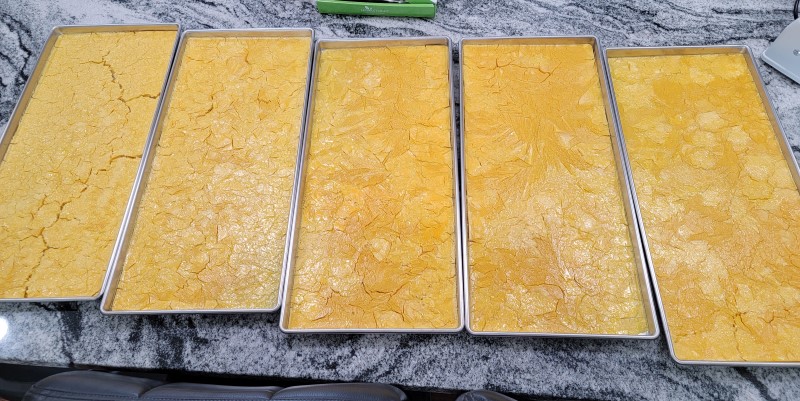
I was a bit concerned about power usage. The manual states that, on average, the large freeze dryer will use between nine and eleven amps of power. Running for a full twenty-four hours means it will use roughly 25-30 kWh of power. At twelve cents per kWh (that’s the top rate our electric company charges right now during the summer) I could spend between upwards of $3.50 per day. I guess that’s not horrible considering what I’m getting.
Anyway, I began breaking up the eggs, but they didn’t turn into powder like I’d hoped.

Although I didn’t turn the bulk of my freeze dried eggs into powder, I did save out a small bit and used a coffee grinder to grind it up.
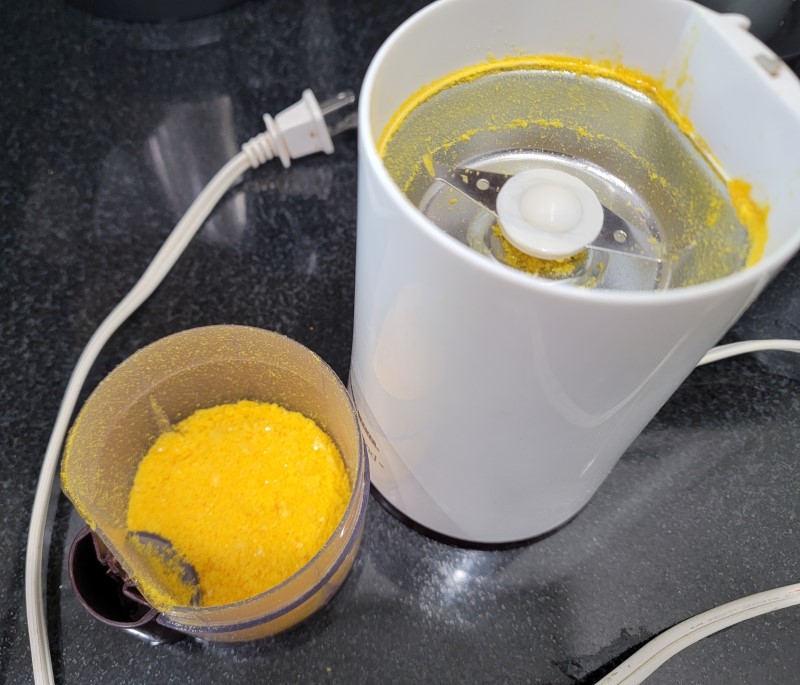
That looks more like what I’m accustomed to seeing. Regardless, I packed the remainder of my eggs (about four and a half sheets worth) into three 8″x12″ Mylar bags.

Their weights were a bit different between bags, but after removing the weight of the three bags and oxygen absorbers I placed inside, I packaged 1.35 pounds of eggs in total. Not bad for my first try. [Note: I saved out about a half of a sheet of eggs, placed in a Tupperware container, to scramble up as a test run.]
Considering that a #10 can of freeze dry eggs, which holds just over two pounds of powdered eggs, sells for upwards of $80 on Amazon, I’m happy with my haul.
Now I just have about a hundred more batches of eggs to go to break even. 😉
And since I have a new toy, I figure I’ll try to freeze dry something each week and post about it on Fridays. We’ll see how that goes.
Enjoy!
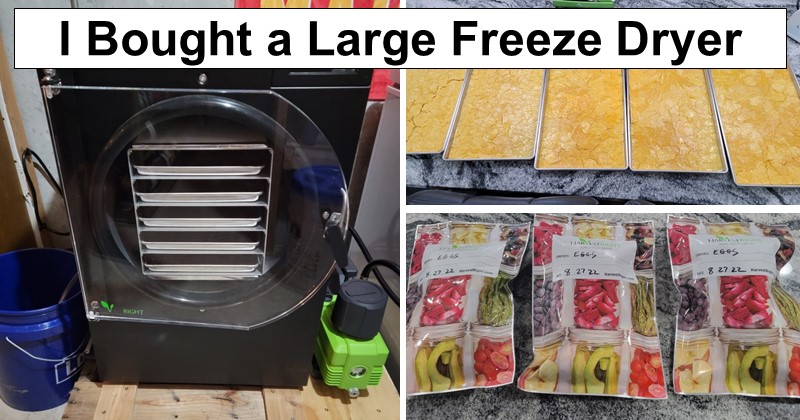
Leave a Reply